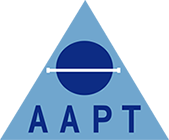News
AAPT London and South East lecture evening report
Jade Parmenter: Trainee Anatomical Pathology Technologist, Great Ormond Street Hospital gives an overview of the latest AAPT London and South East network lecture evening
Moheb Costandi: The Science of Human Decomposition
Mr Costandi gave an interesting and insightful presentation about the science of human body decomposition. He began by telling us about the experiences he had in Texas with a family who ran a funeral home and how he was able to see some examples of real human body decomposition at body farms in the state he was visiting.
As a trainee, I found the way Mr Costandi explained the stages of human decomposition easy to understand and very easy to learn from:
- Oxygen deprivation: Begins as soon as the heart stops beating.
- Autolysis: Where cells and tissues begin to break down.
- Rigor mortis (stiffness of death): Starts in the muscles of the eyelids and works its way down to the rest of the body.
- Algor mortis (coldness of death): Body temperature drops and climatises with the temperature of the environment.
- Putrefaction: Decay of the body. The break down of soft tissues into gases and liquids, which causes bloating.
- Purging: Broken down tissues leak out of orifices.
- Dry stage: Moisture leaves the skin and skin hardens and clings to bones.
We were given an insight into the sorts of insects that feed on decomposing bodies and what areas they like to feed from e.g. scalp/skin.
He gave descriptions of the people he met and their job roles at the body farms. They ranged from research assistants, who assisted with laying out the bodies and scientists, who studied the rate of decomposition and the insects that visited the bodies and the richness of the soil surrounding them.
Overall, Mr Costandi’s presentation was intriguing and eye opening. A holiday to Texas sounds like a good idea!
Alex Virasami: A Practical Approach to Placental Dissection
Alex, a researcher in histopathology at Great Ormond Street Hospital, gave an entertaining talk about the correct ways to dissect a placenta. I was particularly looking forward to learning more about placentas as we receive a lot at GOSH and can hold a lot of information. Alex kept the talk light and his sense of humour kept us entertained!
His facts about how people used to perceive placentas, and even how some people think of them now was eye opening. The Placenta Centre, where people can send their placentas to be made into remedies and supplements was a concept a lot of us hadn’t heard of!
I learned the importance of timekeeping when it comes to getting accurate samples of placentas, to make the most out of the information we get from them.
Overall, Alex’s presentation opened my eyes to the importance of the placenta and how best to dissect it.
Being a trainee, I found the evening a helpful way to socialise and meet people that work as APT’s and people at similar stages in their career as me. The talk on human decomposition was an insight to me as a Trainee Paediatric Anatomical Pathology Technologist, because working with children, we don’t often see decomposition. Just like it may have been useful to those working in adult mortuaries to learn about placental dissection.
